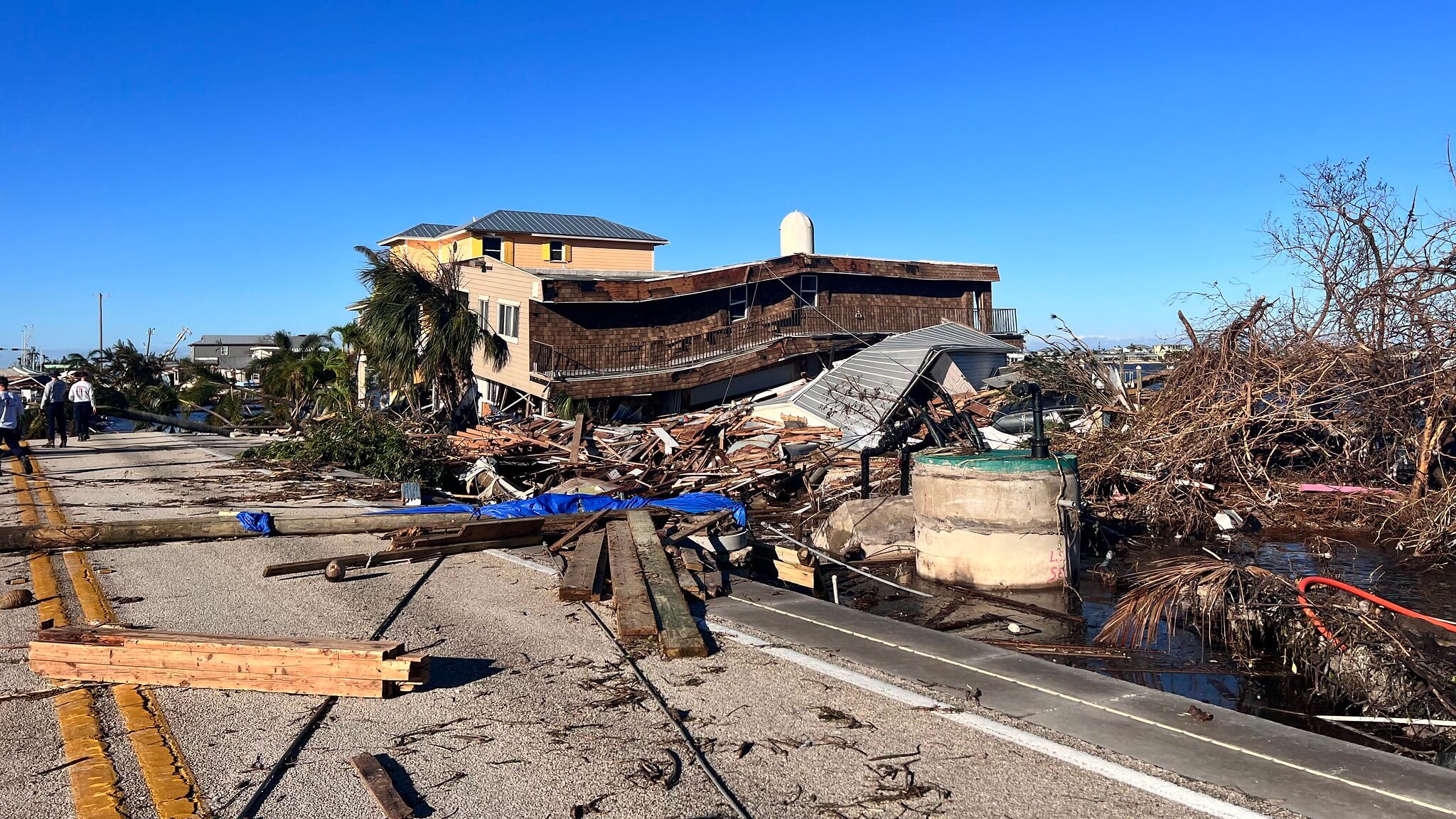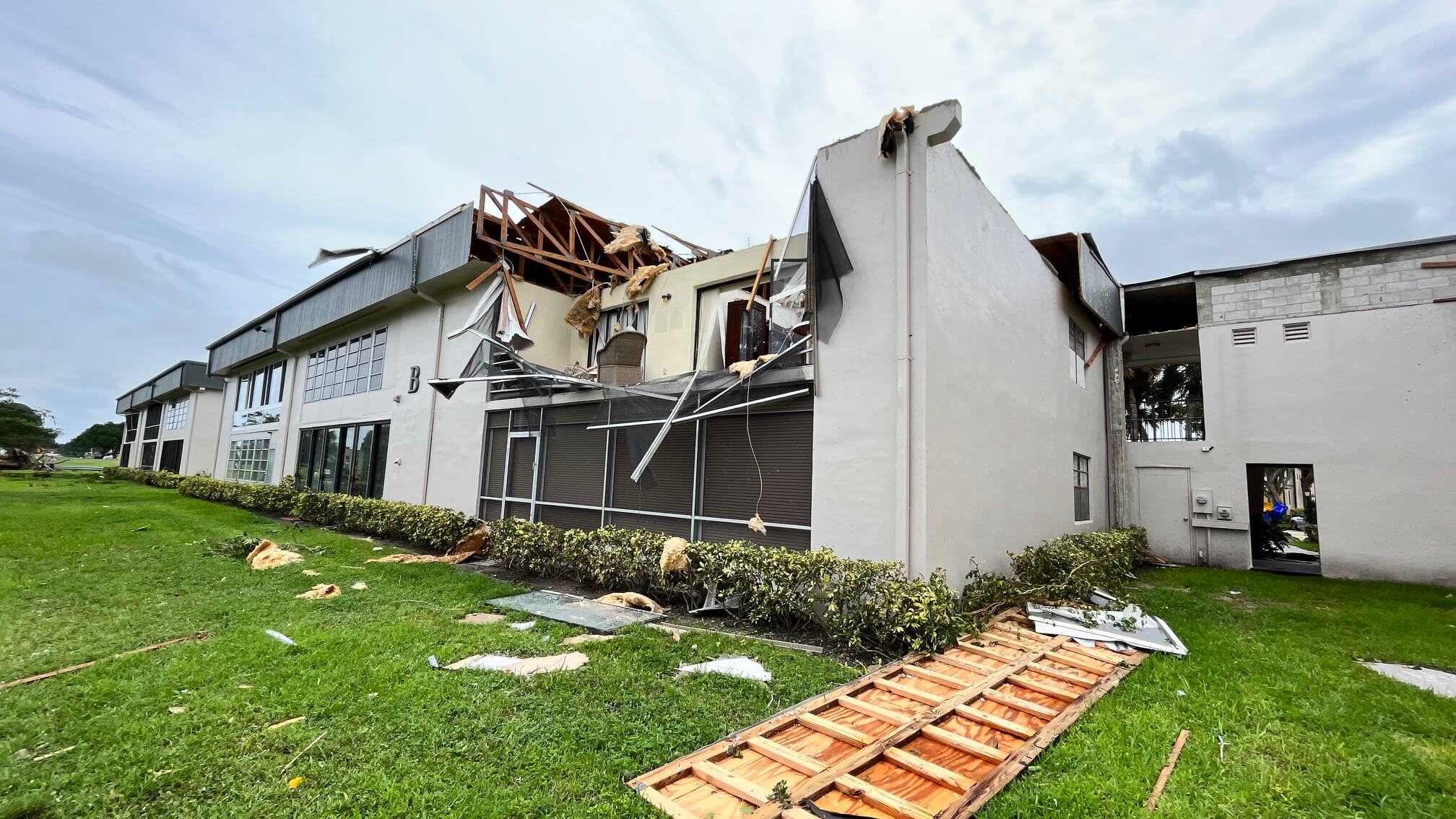As the water recedes and the sheer scope of damage comes into view, there are indications that Hurricane Ian, now churning northward as a tropical storm after pummeling Central Florida overnight and this morning, could be the deadliest storm in the state’s history, with President Joe Biden warning Floridians to brace for a “substantial loss of life.” As of earlier today, 13 people were confirmed dead as a direct result of the storm, which made U.S. landfall as a Category 4 hurricane yesterday afternoon, September 28, near Fort Myers. The death toll is expected to climb as rescue and recovery efforts continue throughout the state.
Although the slow-moving monster of a storm veered east before taking a direct hit at the super-populous Tampa Bay area as initially feared, communities south of Tampa—Fort Myers, Naples, Marco Island, Bonita Springs, Sarasota, Bradenton, Punta Gorda, and on—all suffered. Up and down the southwestern Florida coast, cities and towns took an extreme lashing with record-breaking winds, torrential rain, tornados, and storm surge all playing into the mix.

A vast majority of homes in the counties under evacuation orders—among the fastest-growing counties in the nation—lack flood insurance. Some of the impacted communities, particularly in wealthy Collier County, are home to some of the most expensive—and vulnerable—real estate in the country. In a region where much of the new housing development looks like this, the damage appears nothing short of catastrophic.
In well-heeled Naples, the city’s historic pier that stretches 1,000 feet out and over the Gulf of Mexico was completely destroyed by the storm, its pilings torn out from beneath it by 20-foot waves. First built in 1899, the pier has been rebuilt and renovated several times over the decades after other major storms. North of Naples in Lee County, the town of Fort Myers Beach, located on Estero Island, was left in an utter state of ruin. The town’s beloved namesake pier was also decimated by the storm along with a wide swath of homes and businesses surrounding it.
Not too far from Fort Myers Beach, entire sections of the 3-mile-long Sanibel Causeway were wiped away. The causeway links mainland Florida with Sanibel Island, a 12-mile-long barrier island known for its seashells, nature sanctuaries, and modernist architecture pedigree,“Where the bridge rises from the mainland toward the island, one of the first sections of the span has disappeared. Crumbled pavement lies near the water’s edge. The rest of the bridge stretches forward, unreachable,” wrote the Tampa Bay Times of the roadway, which is the only way to access Sanibel (and neighboring Captiva Island) save by boat or helicopter. This has impeded rescue efforts on the flood-ravaged island which, per The New York Times, is home to roughly 6,500 full-time residents. The causeway, comprised of two bridge spans and two manmade causeway islands, will need to be rebuilt as will the Pine Island Bridge, a bascule bridge providing access to another Lee County barrier island, also destroyed by Ian.
Miles inland from the coast, inundated rivers and canals left surface streets impassable while the record-breaking storm surge brought internet memes to life.
Sarasota Bradenton Airport also sustained heavy damage.

The water treatment system in Lee County, which includes the cities of Fort Myers and Cape Coral, felt the strain of the storm with officials issuing a boil water notice and hospital evacuations taking place across the county due to potable water shortages. More than 2.6 million Floridians—and not just those in hardest-hit Southwest Florida—remain without power per the latest Florida Power & Light estimates. It’s likely that large swaths of the state’s electric infrastructure will have to be rebuilt.
As of this writing, Ian, a storm that’s history-making ferocity was made possible by climate change, is back at sea and churning over the warm waters of the Atlantic. The storm is anticipated to gain significant strength—and likely regain Category 1 hurricane status—before making second landfall on the South Carolina coast tomorrow. That region is already battening down the hatches.
We will continue to update this article and publish new dispatches with a focus on Ian’s devastating impact on the built environment, including on crucial infrastructure and historic buildings in Southwest Florida and beyond.











